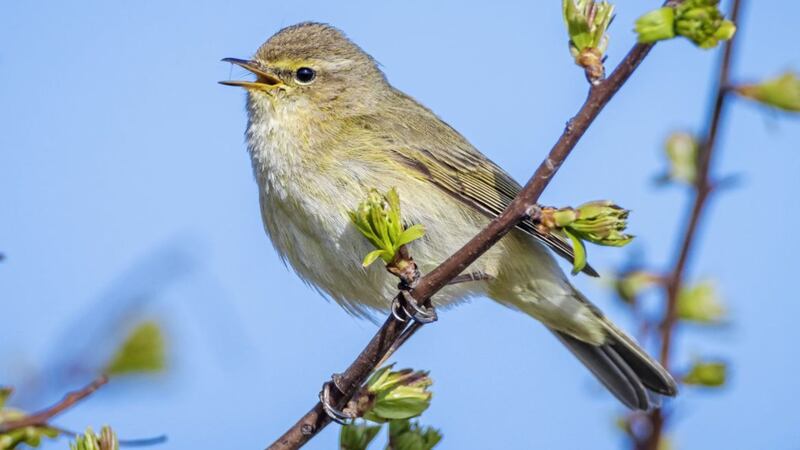IT is difficult to quantify the import of a simple two-note call from a bird weighing less than a one-pound coin.
The call, which comes from the chiffchaff as it arrives on our shores, announces beyond doubt that spring has arrived.
Waiting eagerly on its song in recent weeks, I finally picked out its graceful, buoyant 'chiff-chaff' strains from the upper branches of a willow on Saint Patrick's eve.
Just returned from sub-Saharan Africa, this tiny warbler wasted no time, publicising its presence to potential suitors. Here now to raise young during the summer months, the bird will inhabit our woodlands, enjoying rich pickings of flies, midges, and caterpillars.
Previously on this page, I've referenced the returning chiffchaff as the harbinger of spring and as affirmation, in the words of Ted Hughes, that "the globe's still working, the Creation's/Still waking refreshed". (From his poem Swifts).
Today I give full recognition to this feathered frame of hope and expand on its many charms.
Phylloscopus collybita is suitably named from the ancient Greek phullon meaning 'leaf' and skopos 'seeker or watchman', as the bird is most often seen searching the undersides of leaves for gnats and aphids.
Hence the chiffchaff's designation as a 'leaf warbler', one of many warbler species worldwide which, with flicking wings and tails forage through the foliage and branches of trees in animated motion.
Collybita also comes from the Greek 'kollubistes', meaning 'money changer', given to the bird because of its song sounding like clinking coins.
With dull olive-green plumage and buffish underparts, the chiffchaff is almost indistinguishable from its cousin the willow warbler, another summer visitor, whose greenish complexion is slightly brighter.
Both about the size of blue tits, the easiest way to identify the birds is by their contrasting songs, with the willow warbler's repeated descending series of trills notably different from the two-note tune of the chiffchaff, neatly expressed in its Irish name, 'Tiuf-teaf'.
English nature poet John Clare wrote of the chiffchaff, "Uttering its restless melodies/Of 'Chipichap'' throughout the day".
The edgy nature of the bird is conveyed in his poem The Chiffchaff where he later says, "And o'er the treetops saw it fly, Dancing about, a fairy thing/But never yet could come so nigh/To tell the colour of its wing".
It was the pioneering English naturalist Reverend Gilbert White (1720-1793) of Selbourne who, through meticulous observation of visiting warblers, was first able to differentiate the two warblers by their song.
The next few weeks offer the best window for seeing the bird's mossy appearance and furtive behaviour before the tree canopies imperceptibly fill out with green to screen its presence.
In the days ahead, the male will establish a suitable territory before attracting the later-returning female and finding a suitable nest site.
The nest is very well concealed and built by the female close to the ground in brambles, tall grasses, or other dense vegetation.
Clare describes its seclusion thus:
"Its nest is built in little bush
Scarcely a foot above the ground,
Or hid in clumps of sedge or rush
In woods where they are rarely found."
Within its dome shaped form and side entrance, an average clutch of five will be raised, and with favourable conditions a second clutch may follow.
As the chiffchaff negotiates the months ahead, it will be joined by other summer migrants, the cuckoo, swallow and swift, spotted flycatcher and many more, all hoping to produce offspring and continue the remarkable story of annual migration.
Filling our skies with music, dance and hope, these incoming birds emphasise to us the world still works.








